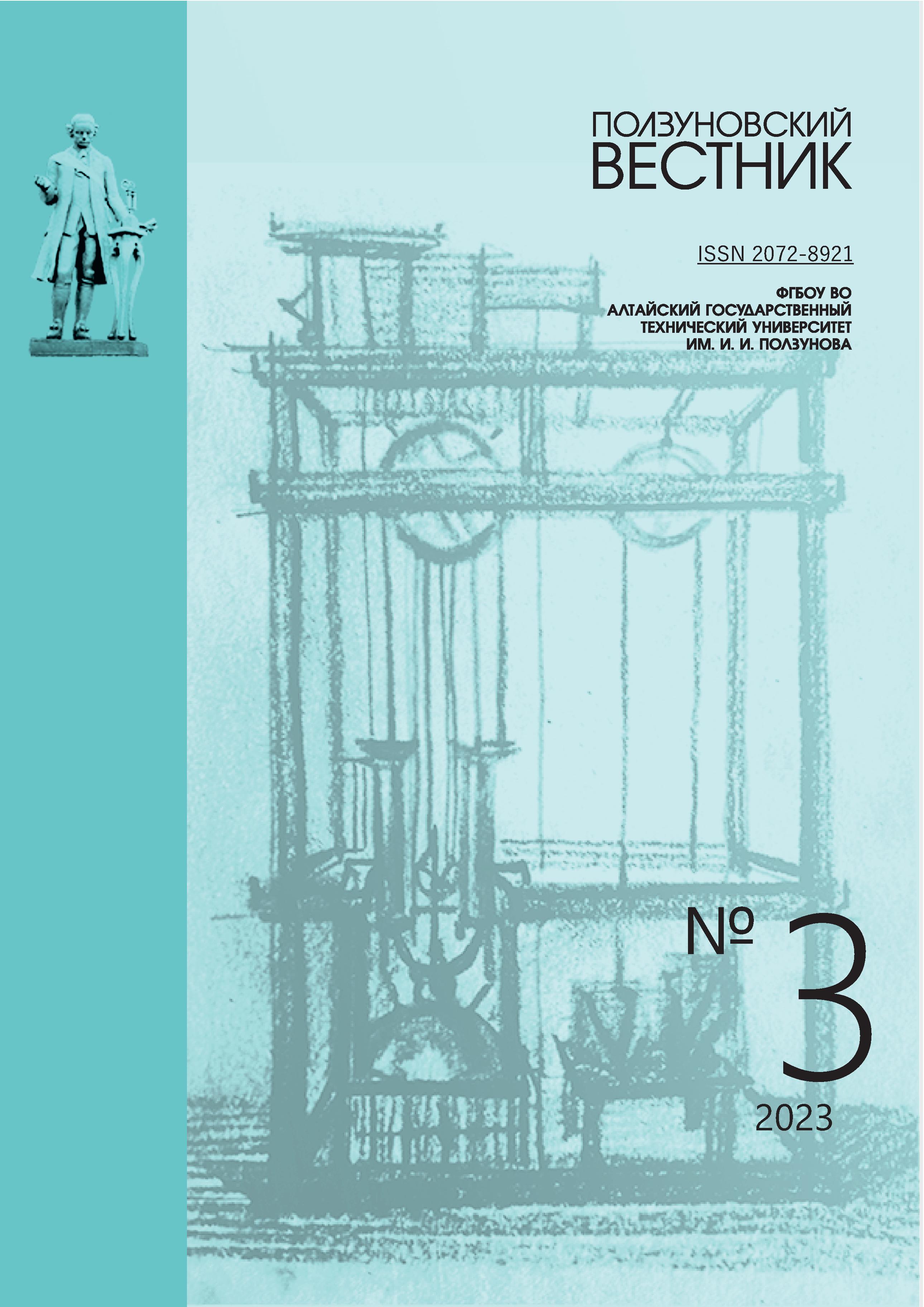PHYSICO-CHEMICAL FEATURES OF MODIFICATION OF FI-BROUS MATERIALS BY ORGANOSILANE FINISHES
UMRQWT
DOI:
https://doi.org/10.25712/ASTU.2072-8921.2023.03.024Keywords:
polyacrylonitrile technical flagellum, hydrate cellulose technical thread, basalt threads, organosilane fin-ishes, modification, chemical composition, strength, wettabilityAbstract
Modification of fibrous fillers with organosilane finishes is an effective way of directional regulation of adhesive interaction between components of composite materials. The chemical composition and character of the surface, mechanical properties and wetting of modified reinforcing systems - polyacrylonitrile technical flagellum, hydrate cellulose technical thread and basalt threads, solutions of organosilane finishes are investigated in this work: AGM-9, A-187 and A-174. Studies of samples of modified fibrous materials were carried out using methods of infrared spectroscopy, scanning electron and optical microscopy, mechanical tests and evaluation of their wettability. On the spectra of modified filaments, peaks characteristic of the groups included in the modifiers are identified, which suggests a physicochemical interaction between the functional groups of organosilanes and hydroxyl groups of fibrous materials, an additional confirmation of which is the results of thermal moisture treatment. It is established that a uniform film coating is formed on the surface of the modified elementary filaments. The results of mechanical tests of modified fibrous materials indicate a significant improvement in strength compared to unmodified fibrous materials: the relative breaking load of the PAN-TF increases by an average of 44 %, HCTT - by 52 %, BT – by 42 %. A comparative analysis of the wetting of modified reinforcing systems with an epoxy oligomer was carried out, indicating the effective effect of organosilanefinishes on increasing the maximum height of the capillary rise of the boundary of the epoxy oligomer solution and the average wetting rate of the threads. Evaluation of kinetic wetting data of modified reinforcing systems has shown that A-174 is the most effective organosilane that improves adhesion compatibility in the matrix/filler system. The physico-chemical features of the modification of fibrous materials by organosilanefinishes are formulated.
References
Функциональные наполнители для пластмасс / под ред. М. Ксантоса. Санкт-Петербург : Научные основы и технологии, 2010. 462 с.
Моцарев Г.В., Соболевский М.В., Розенберг В.Р. Карбофункциональные органосиланы и органосилоксаны. Москва : Химия, 1990. 240 с.
Цвайфель Х., Маер Р.Д., Шиллер М. Добавки к полимерам : Справочник. Санкт-Петербург : ЦОП «Профессия», 2016. 1088 с.
Kumar R., Obrai S., Sharma A. Chemical modifications of natural fiber for composite material // Der Chemica Sinica. 2011. V. 2. № 4. P. 219–228.
Epoxyorganosilane finishing compositions for fibrous fillers of thermosetting and thermoplastic bin¬ders / A.V. Shapagin, N.A. Gladkikh, A.A. Po-teryaev [et al.] // Polymers. 2022. V. 14. № 1. Р. 59–73. doi 10.3390/polym14010059.
Перепелкин К.Е. Армирующие волокна и волокнистые полимерные композиты. Санкт-Петербург : Научные основы и технологии, 2009. 380 с.
Устинова Т.П., Левкина Н.Л., Борисова Н.В. Физико-химические и технологические особенности получения ПАН-волокон и нитей : учеб. пособие. Энгельс : ЭТИ (филиал) СГТУ имени Гагарина Ю.А., 2019. 44 с.
Роговина С.З., Прут Э.В., Берлин А.А. Ком-позиционные материалы на основе синтетических полимеров, армированных волокнами при-родного происхождения // Высокомолекулярные соединения. Серия А. 2019. Т. 61. № 4. С. 291–315. doi 10.1134/S2308112019040084.
Артеменко С.Е., Кадыкова Ю.А. Физико-химические основы технологии базальтопластиков. Структура и свойства : монография. Саратов : Сарат. гос. техн. ун-т, 2012. 144 с.
Wei B., Cao H., Song S. Surface modifica-tion and characterization of basalt fibers with hybrid sizings // Composites. Part A : Applied Science and Manufacturing. 2011. V. 42. № 1. P. 22–29. doi10.1016/j.compositesa.2010.09.010.
Корчина Л.В., Зубова Н.Г., Устинова Т.П. Выбор режима модификации ПАН-жгутика аппретирующими добавками // Современные твердофазные технологии : теория, практика и инновационный менеджмент : материалы международной научно-инновационной молодежной конференции. Тамбов : ТГТУ, 2013. С. 228–230.
Gerasimova V.M., Zubova N.G., Usti-nova T.P. Influence of hydrate cellulose fibers modi-fication parameters on their properties // Fibre Chem-istry. 2016. № 48. Р. 50–52. doi : 10.1007/s10692-016-9736- z.
Effectiveness of modifying viscose technical and basalt yarns used to reinforce epoxy plastics / V.M. Gerasimova, N.G. Zubova, S.G. Kalganova [et al.] // Fibre Chemistry. 2019. № 3. P. 191–194. doi : 10.1007/s10692-019-10072- x.
Андреева В.Д., Горшков И.И. Электронная микроскопия материалов : учеб. пособие. Санкт-Петербург : Изд-во Политехн. ун-та, 2016. 139 с.
Инфракрасная спектроскопия полимеров / под ред. И. Деханта. Москва : Химия, 1976. 472 с.
Кобляков А.И., Кукин Г.Н., Соловьев А.И. Лабораторный практикум по текстильному материаловедению : учеб. пособие для вузов. Москва : Легкая промышленность, 1986. 334 с.
ГОСТ 10213.2-2002. Волокно штапельное и жгут химические. Методы определения разрывной нагрузки и удлинения при разрыве. Технические условия : введ. 01.11.2003. Москва : Из-дательство стандартов, 2003.
Бычкова Е.В., Кадыкова Ю.А., Левкина Н.Л. Смачивание в композиционных материалах. Саратов : СГТУ, 2012. 20 с.
Кадыкова Ю.А. Физико-химические закономерности создания полимерматричных композитов функционального назначения на основе базальтовых дисперсно-волокнистых наполнителей, углеродных и стеклянных волокон : автореф. дисс. … д ра. техн. наук. Саратов, 2013. 44 с.
Беллами Л. Инфракрасные спектры сложных молекул. Москва : Издательство иностранной литературы, 1963. 590 с.
Сытник Р.Д. Модифицирование поверхности силикатных стекол расплавами и растворами. Харьков : Майдан, 1997. 188 с.
Downloads
Published
How to Cite
Issue
Section
License
Copyright (c) 2023 Natalya G. Zubova

This work is licensed under a Creative Commons Attribution 4.0 International License.















 .
. This work is licensed under a
This work is licensed under a 
